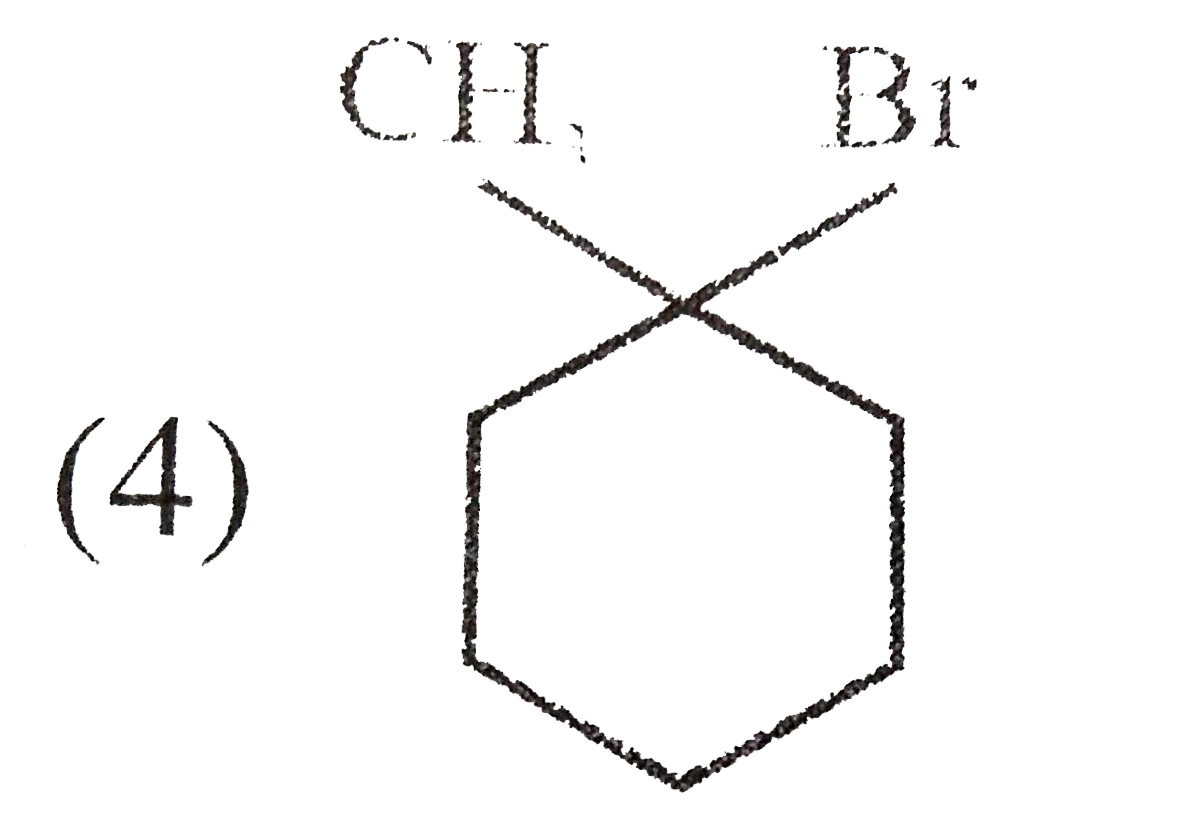4. Which one of the following compounds does not given C2H5Cl by the reaction of C2H5OH?
SOCl2
PCl5
ZnCl2+ HCl
Cl2
The correct Answer is:D
To solve the question of which compound does not give C2H5Cl (ethyl chloride) by the reaction with C2H5OH (ethanol), we can analyze the options provided.
1. Identify the Reactant: The reactant is ethanol, which has the formula C2H5OH.
2. Analyze the First Option (Thionyl Chloride, SOCl2):
- When ethanol reacts with thionyl chloride, the chloride ion (Cl-) acts as a nucleophile and substitutes the hydroxyl group (OH) in ethanol.
- The reaction produces C2H5Cl (ethyl chloride), along with gaseous SO2 and HCl.
- Therefore, this option does give C2H5Cl.
3. Analyze the Second Option (Phosphorus Pentachloride, PCl5):
- When ethanol reacts with PCl5, it also results in the formation of C2H5Cl, along with POCl3 and HCl.
- Thus, this option also gives C2H5Cl.
4. Analyze the Third Option (Lucas Reagent, ZnCl2 + HCl):
- The Lucas reagent is used to distinguish between alcohols based on their reactivity.
- For primary alcohols like ethanol, there is no immediate reaction with the Lucas reagent. However, ethanol can still react under certain conditions.
- In the presence of ZnCl2, ethanol can form a complex, and the OH group can be replaced by Cl, leading to the formation of C2H5Cl.
- Therefore, this option also gives C2H5Cl.
5. Analyze the Fourth Option (Chlorine, Cl2):
- Chlorine can oxidize ethanol. When ethanol (a primary alcohol) is oxidized, it converts to acetaldehyde (CH3CHO).
- The chlorination of acetaldehyde does not lead to the formation of C2H5Cl directly. Instead, it may lead to chlorinated products of the aldehyde.
- Therefore, this option does not yield C2H5Cl.
Conclusion:
The compound that does not give C2H5Cl by the reaction with C2H5OH is Chlorine (Cl2).
---
- When ethanol reacts with thionyl chloride, the chloride ion (Cl-) acts as a nucleophile and substitutes the hydroxyl group (OH) in ethanol.
- The reaction produces C2H5Cl (ethyl chloride), along with gaseous SO2 and HCl.
- Therefore, this option does give C2H5Cl.
- When ethanol reacts with PCl5, it also results in the formation of C2H5Cl, along with POCl3 and HCl.
- Thus, this option also gives C2H5Cl.
- The Lucas reagent is used to distinguish between alcohols based on their reactivity.
- For primary alcohols like ethanol, there is no immediate reaction with the Lucas reagent. However, ethanol can still react under certain conditions.
- In the presence of ZnCl2, ethanol can form a complex, and the OH group can be replaced by Cl, leading to the formation of C2H5Cl.
- Therefore, this option also gives C2H5Cl.
- Chlorine can oxidize ethanol. When ethanol (a primary alcohol) is oxidized, it converts to acetaldehyde (CH3CHO).
- The chlorination of acetaldehyde does not lead to the formation of C2H5Cl directly. Instead, it may lead to chlorinated products of the aldehyde.
- Therefore, this option does not yield C2H5Cl.
The compound that does not give C2H5Cl by the reaction with C2H5OH is Chlorine (Cl2).
Similar Questions
Knowledge Check
- Question 1 - Select One
Which one of the following will give recemised product in C2H5OH ?
ACH3−CH∣CH3−BrBPh−CH3∣C∣CH3−ClCPh−CH3∣C∣H−ClD
- Question 2 - Select One
From the following compounds which does not react with C6H5SO2Cl ?
ACH3NH2B(C2H5)3NCC2H5NH2D(CH3)2NH. - Question 3 - Select One
From the following compounds which does not react with C6H5SO2Cl ?
AC2H5NH2BCH3NH2C(CH3)2NHD(C2H5)3N
Which one of the following processes does not oC Cur during formation of CHCI3 from C2H5OH and bleaching powder? .
View SolutionC2H5ONa acts as ……. In C2H5OH.
View SolutionThe reaction C2H5Cl+KOH→C2H5OH+KCl is
View SolutionA fruity smell is produced by the reaction of C2H5OH with
View SolutionA fruity smell is produced by the reaction of C2H5OH with
View Solution

